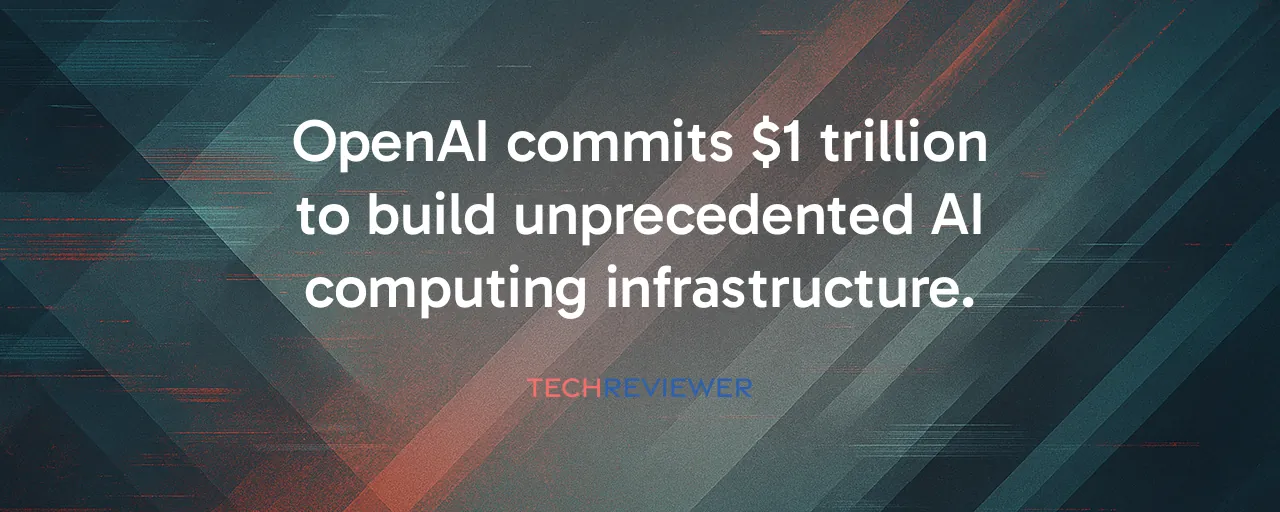A Colossal Leap for AI
OpenAI is going all in. With $13 billion in annual revenue, 70% of which comes from consumers paying $20 a month for ChatGPT, the company is already a juggernaut. It is planning to spend over $1 trillion in the next decade to build the kind of computing power that could redefine artificial intelligence. This ambition draws comparisons to the internet boom of the 1990s and the mobile revolution of the 2000s. But with great ambition comes even greater risk, and OpenAI's path is anything but certain.
The numbers are staggering. ChatGPT boasts 800 million regular users, but only 5% pay for subscriptions. That's a massive untapped market, and OpenAI is banking on converting more free users while expanding into new areas like government contracts, video services, and even hardware. While Microsoft remains its primary cloud provider through Azure, OpenAI has also formed partnerships with Oracle, Nvidia, AMD, and Broadcom to secure 26 gigawatts of additional computing capacity, enough to power entire cities. If this works, OpenAI could cement its place as the backbone of AI innovation. If it doesn't, the fallout could ripple across the economy.
Lessons From the Past
History offers a playbook for understanding OpenAI's gamble. The dot-com bubble of the late 1990s saw telecom giants pour billions into fiber optic cables, expecting internet demand to grow forever. Many crashed when the hype outpaced reality, leaving investors burned. Yet, those cables later fueled the internet's global expansion. Similarly, the mobile boom after 2007 saw Apple and Google invest heavily in smartphones, creating trillions in value because consumers were ready to pay. OpenAI's challenge is different: its trillion-dollar bet relies on unproven demand for AI at scale.
Take WeWork as another cautionary tale. It burned cash chasing hypergrowth, only to collapse when its business model didn't add up. OpenAI's $7.8 billion in operating losses in just the first half of 2025 raises eyebrows. Unlike WeWork, though, OpenAI has real traction, with revenue soaring from $28 million in 2022 to $13 billion today. The question is whether it can keep that momentum while spending 77 times its current revenue. The mobile boom succeeded because demand was clear. OpenAI's success hinges on proving AI's value to businesses and governments alike.
The Power Behind the Plan
At the heart of OpenAI's strategy is raw computing power. The company's Stargate project, a $500 billion venture with Oracle and SoftBank, aims to build data centers that dwarf anything seen before. These facilities are part of a broader infrastructure plan that includes 26 gigawatts of total computing capacity across multiple partners, enough to rival small nations. To put that in perspective, a single gigawatt powers about 750,000 homes. OpenAI's custom AI accelerators, developed with Broadcom, promise to make these data centers more efficient, potentially cutting reliance on pricey Nvidia chips.
But it's not just about hardware. OpenAI is pushing into new territory with its Sora video platform and AI agents that handle complex tasks. These innovations could unlock new revenue streams, from enterprise subscriptions to consumer hardware. The federal government's partnership, offering ChatGPT to each agency for just $1 per year, shows how deeply AI is embedding into public life. Still, the energy demands are raising red flags. Data centers could strain power grids and water resources, especially in places like Texas, where cooling systems compete with local needs.
Balancing Ambition and Reality
Not everyone's sold on OpenAI's vision. Wall Street analysts warn that the company's spending could outpace its revenue for years, especially if open-source rivals like DeepSeek keep offering similar capabilities for free. DeepSeek, for instance, operates with approximately 2% of OpenAI's operating expenses, putting significant pressure on premium pricing. AI safety advocates also raise concerns, pointing to OpenAI's shift toward a for-profit model as a potential risk to responsible development. If profits trump safety, they argue, the consequences could be dire as AI nears more advanced capabilities.
On the flip side, supporters see OpenAI's scale as its strength. By locking in massive computing capacity, the company could outpace competitors like Google or Anthropic, who are also racing to dominate AI. The federal government's embrace of ChatGPT signals confidence in its potential to transform work. With 5 million business users and counting, OpenAI's enterprise traction is undeniable. The real test is whether it can convert more of its 760 million free users and prove AI's worth to skeptical businesses watching their budgets.
What's at Stake
OpenAI's trillion-dollar bet isn't just about one company. Major U.S. corporations now rely on its AI to fulfill critical contracts, meaning a misstep could shake markets. The broader economy is also tied to AI spending, with Amazon, Microsoft, and others pouring over $300 billion into infrastructure in 2025 alone. If OpenAI pulls this off, it could usher in an era where AI powers everything from government to healthcare. If it falters, it risks becoming a cautionary tale like the fiber optic bust, where bold bets didn't match reality.
The stakes extend beyond dollars. AI's growing role raises questions about privacy, as user data gets stored indefinitely under court orders. It also challenges society to adapt to a world where AI reshapes jobs and education. OpenAI's plan to become a computing supplier through Stargate could democratize access to AI power, but only if it navigates the logistical, environmental, and competitive hurdles ahead. For now, the company is racing to turn its vision into reality, and the world is watching to see if it can deliver.
